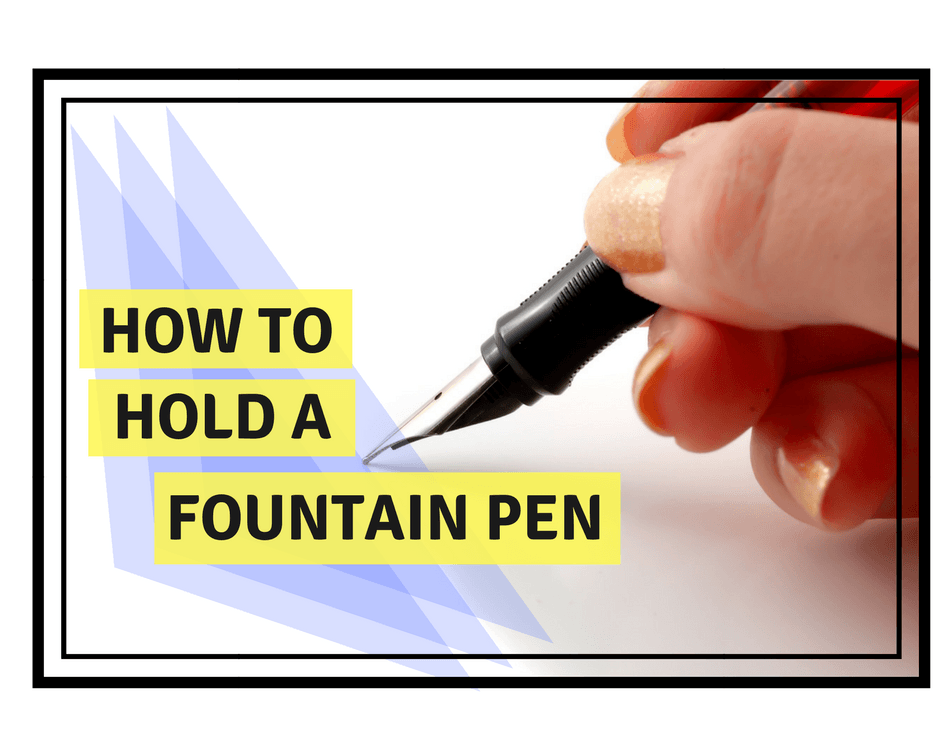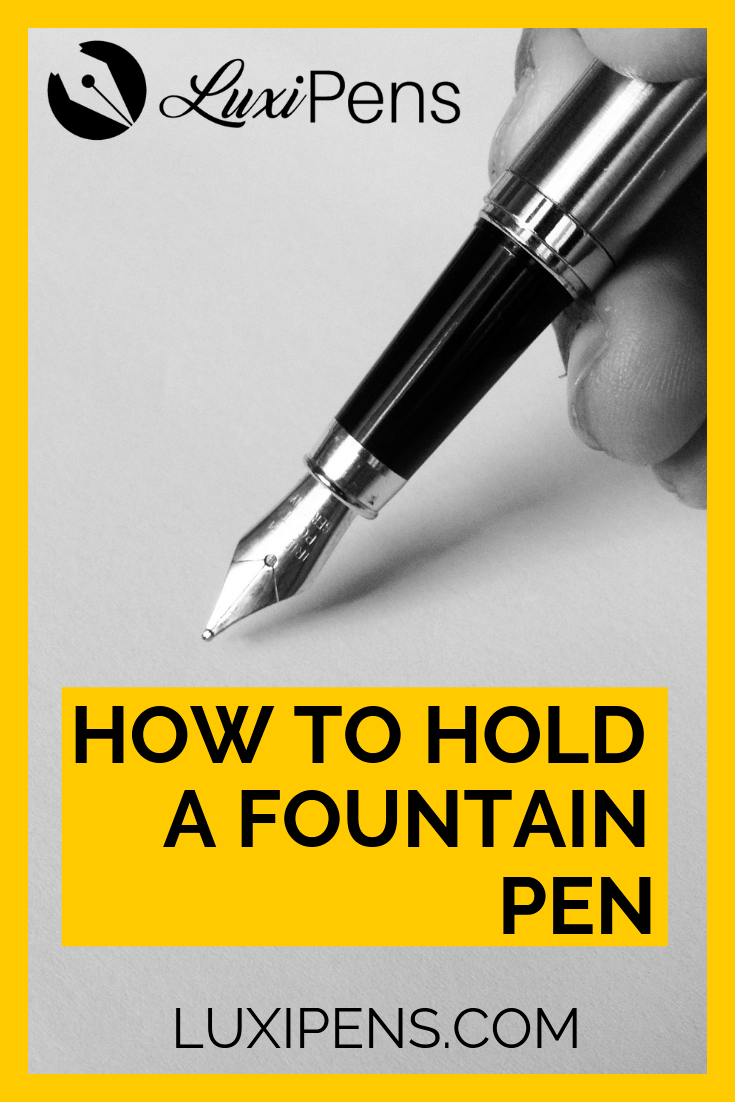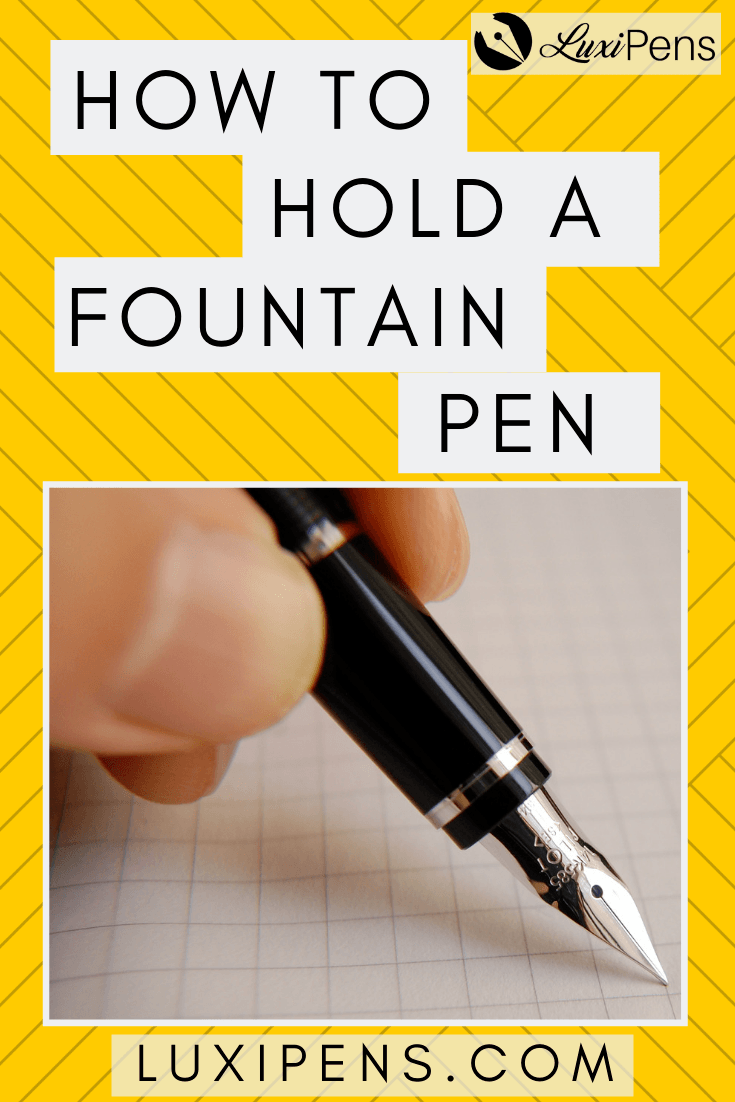If you’ve recently purchased a fountain pen (or perhaps received one as a gift), you’re probably wondering how to hold a fountain pen while writing.
There is a learning curve for writing with a fountain pen. This is because fountain pens must be held at a specific angle to write effectively, more commonly known as “the sweet spot”.
When writing with a fountain pen, you’ll only need to apply slight pressure from this specific angle to make the ink flow from the reservoir, down the nib, and onto the writing surface. It is at this perfect angle where applying the slightest pressure to the pen lifts the nib up and removes the vacuum between the feeder and pen reservoir. This allows the ink to flow onto your writing surface.
For more details on how to hold a fountain pen, please read on...
How to Hold a Fountain Pen: Fountain Pen Posture and Technique

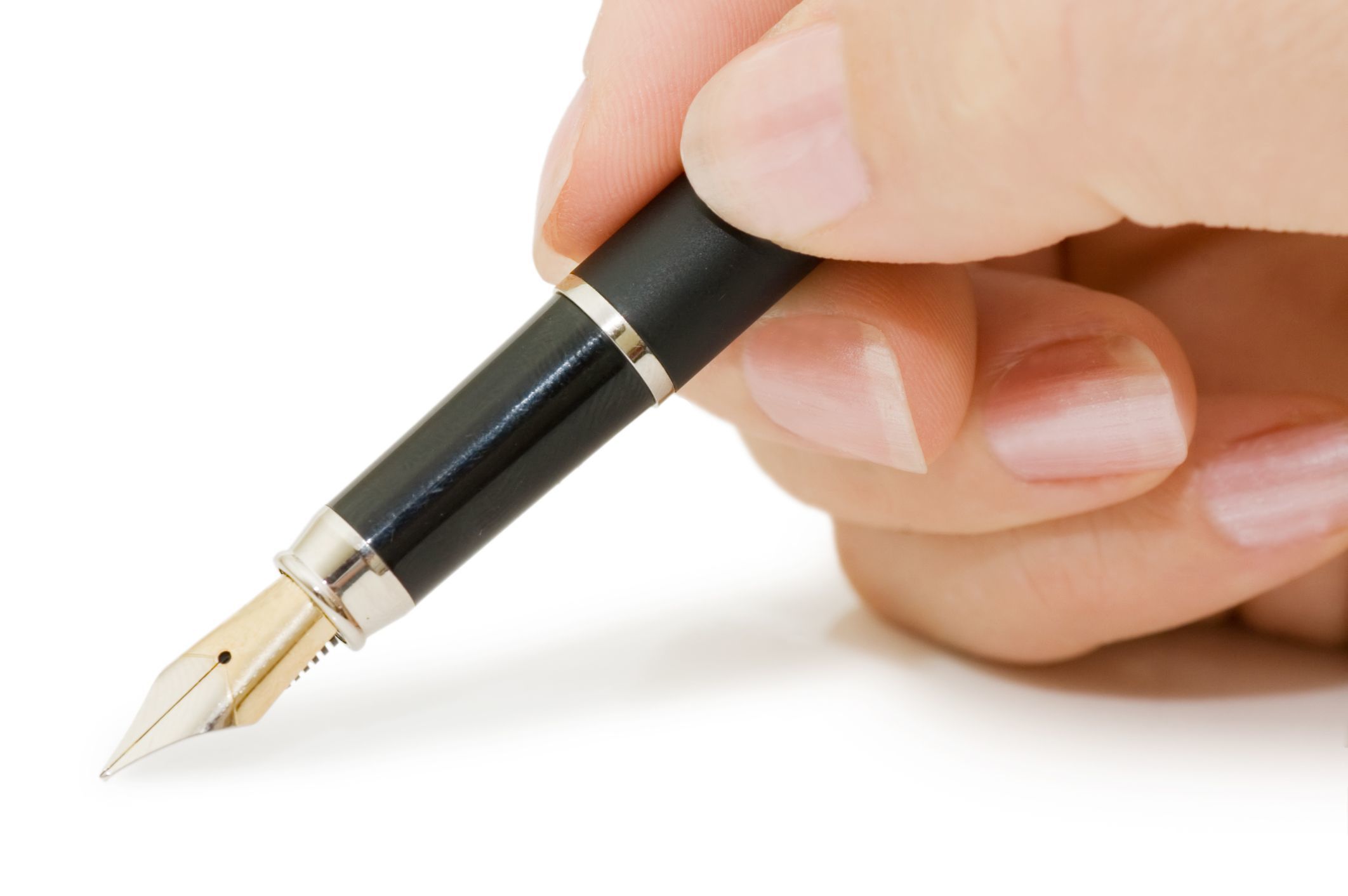
Look closely at the two images above. In the one with the pencil, a standard tripod grasp is used. This is how children are taught to write in elementary school, and it is a habit that often follows them through life.
Now, look at the hand holding the fountain pen. Instead of using a three-fingered tripod grasp, the pen is positioned between the thumb and index finger. This section will go over the placement of your fingers on the fountain pen.
Holding a Fountain Pen - Step-by-Step
- 1Position the pen securely between your index finger and thumb. Do not insert it between the fingers as you would when using the tripod grip. It should be touching the pad of your thumb and the side of your index finger, near the top.
- 2Take your remaining three fingers and curl them under your hand, flat or angled against the writing surface to create the perfect angle for the pen. This is usually forms close to a 45-degree angle with the writing surface.
- 3Write with the pen between your index finger and thumb. You can slightly rest the pen on your remaining fingers, but do not use them to hold the fountain pen steady. Simply use them for leverage.
Spencerian Handwriting
Popular in the mid-to-late 1800s in the United States, the Spencerian grip (or Spencerian handwriting) makes use of several ‘foundation’ strokes. These basic strokes are used to create any letter or number. If you are struggling with writing neatly using your fountain pen, mastering Spencerian strokes will provide consistency in your handwriting.
How to Hold a Fountain Pen Left Handed
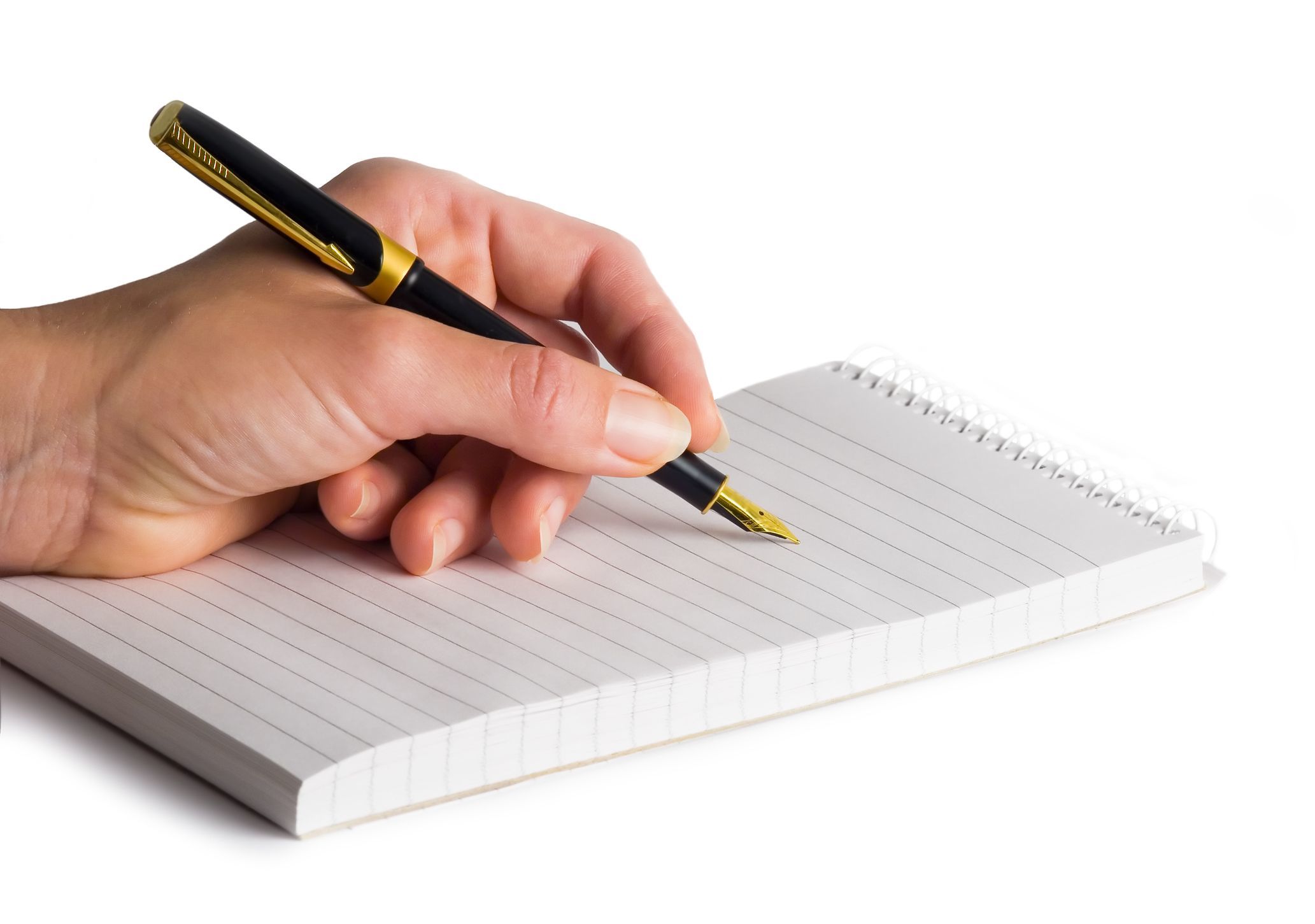
Many fountain pen brands/manufacturers will have you believe that there are special ‘left-handed fountain pens’. Unfortunately, this is fountain pen myth. Fortunately, there is no difference between left and right handed fountain pens. As well, there is no special nib for lefties. Instead, you will need to adjust the way that you write with the pen.
One of the biggest struggles when writing left-handed is smudging because of the left-to-right movement across the page. When you consider how to hold a pen left-handed, there are common writing styles to help reduce ink smudge: underwriting and overwriting. Underwriting (aka ‘Side Writing’) describes writing with your hand positioned under the line of text you are writing. Overwriting (aka ‘Hook Writing’ ) involves making a ‘hook’ shape with your hand, which lets you write from above the line.
Even with the varying fountain pen handwriting styles, however, smudging remains an issue. You can hold a fountain pen the same way as a right-handed person, but you will still find it feels more natural to push the pen instead of pull it. This is problematic, because pushing the nib across the paper instead of pulling it inhibits the ink from flowing freely.
Positioning Your Fingers on the Pen
Another difference you may notice when transitioning from a ballpoint pen to a fountain pen is where you position your fingers on the pen’s shaft. With a common pen or pencil, you would position your fingers closer to the tip of the writing instrument. By contrast, fountain pen writing works best when you position your thumb and index finger toward the center of the pen grip. This is higher (toward the back end of the pen) than you would hold a pencil or ballpoint pen.

An example of finger portion, courtesy of Toshiyuki Imai
It may feel awkward holding the pen this way at first, especially if you are used to writing with a pencil or ballpoint pen. It will feel as if you have less control. When you write with a fountain pen, you’ll be guiding the pen rather than controlling it. To smoothly transition from writing with a ballpoint pen to a fountain pen, you’ll need to loosen your grip just slightly. To achieve good penmanship, you’ll need to relax the tight grip you may be used to with pencils and ballpoints. Over time, you’ll adjust. Once you are used to the effortless, gentle movement of a fountain pen, neat writing will become an easier discipline.
Fountain Pen Writing Angle
Often, people want to know what the correct angle is to hold a fountain pen. Writing at the proper angle is an important factor in fountain pen writing, specifically to create continuous ink flow. Adjust the pen between your fingers so it makes a 40-55-degree angle with your writing surface. In fountain pen parlance, this is often called the fountain pen ‘sweet spot’. You will notice that when compared to pencils, felt-tip markers, ballpoint pens, and other writing utensils, the ‘sweet spot’ is at a lower angle. This means that for a shallow angle, you will hold the pen higher on the barrel. With time, you will adjust your grasp to find the perfect angle that works for you.
Note: Troubleshooting Fountain Pen Neatness
If you are following all of the above suggestions, and you’re still not achieving the desired the results, then perhaps your pen could be the problem. If your goal is to learn how to improve handwriting using a fountain pen, be sure to choose a fountain pen that is the right size for your hand. You should also choose the width of the nib based on how small or large you typically write. An additional tip is to adjust how close (or far) your fingers are from the nib as you write. There is an inverse relationship with position of your grip on the barrel and the angle your fountain pen makes with the writing surface. As you move closer to the nib, the angle of the fountain pen in relation to the paper will increase. By moving your fingers farther away, you can make the angle smaller. Over time, you will eventually find your own ‘sweet spot’. Don’t be surprised if it varies from fountain pen to fountain pen.
Fountain Pen Feedback
What is Fountain Pen Feedback?
Feedback, also referred to as toothiness or ‘bite’, describes the amount of resistance that exists as the pen is moved across the paper. The feedback is the feeling of friction created when you apply pressure to the writing surface. In an ideal situation, fountain pen writing is incredibly smooth and effortless. A rougher nib or a dryer nib will provide more feedback than a smoother or wetter nib.
When using a fountain pen, the feedback that you receive from the pen drastically affects the experience of writing, drawing, or producing work. This section will go over feedback, so you can troubleshoot fountain pen problems.
Tine Misalignment
Scratchiness, not to be confused with ‘feedback’, is an undesirable result in writing with a fountain pen. Often, it’s caused by a misalignment of the tines. The tines of the fountain pen are the two (sometimes three) separate parts of the nib, which are divided by the slit that carries ink from the ink reservoir, through the feeder, and down to the tip of the nib.
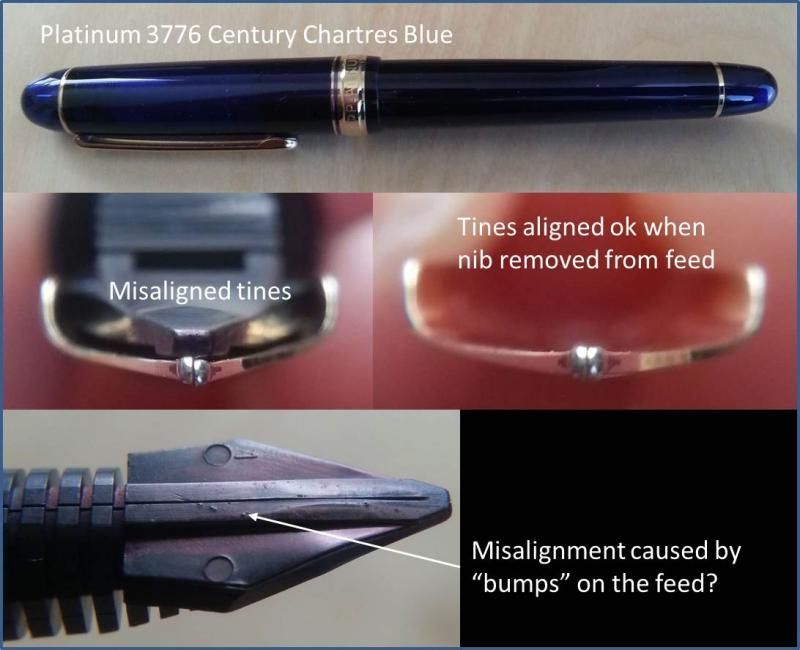
Misaligned tines. Image courtesy of Jochen
If the tines are misaligned, you will likely experience the feeling of a scratchy fountain pen nib when writing in one direction and not the other.
Other Factors that Affect Fountain Pen Feedback
In addition to tine misalignment, the paper that you are using can affect feedback. Some papers cause ink to bleed and make lines distorted or wide, while others hold the ink and allow you to create thin lines and neater writing.
Additionally, the finish of the nib’s tip (tipping material) can impact feedback. The finish describes the way that the manufacturing company polishes, or grinds, the nib. Each nib is finished using sandpaper or micromesh. The grit (how fine or rough the material is) determines how smoothly the nib will glide across paper when used for writing. Each brand has a distinct and different method of refining their nibs, but most new nibs have a smooth finish. Used fountain pen nibs are rougher if the writing surface and previous use has ground them down.
It's important to understand how fountain pens work when diagnosing issues. Check out our article "How Does a Fountain Pen Work?" for more information.
Positioning the Iridium (Tip of the Nib)
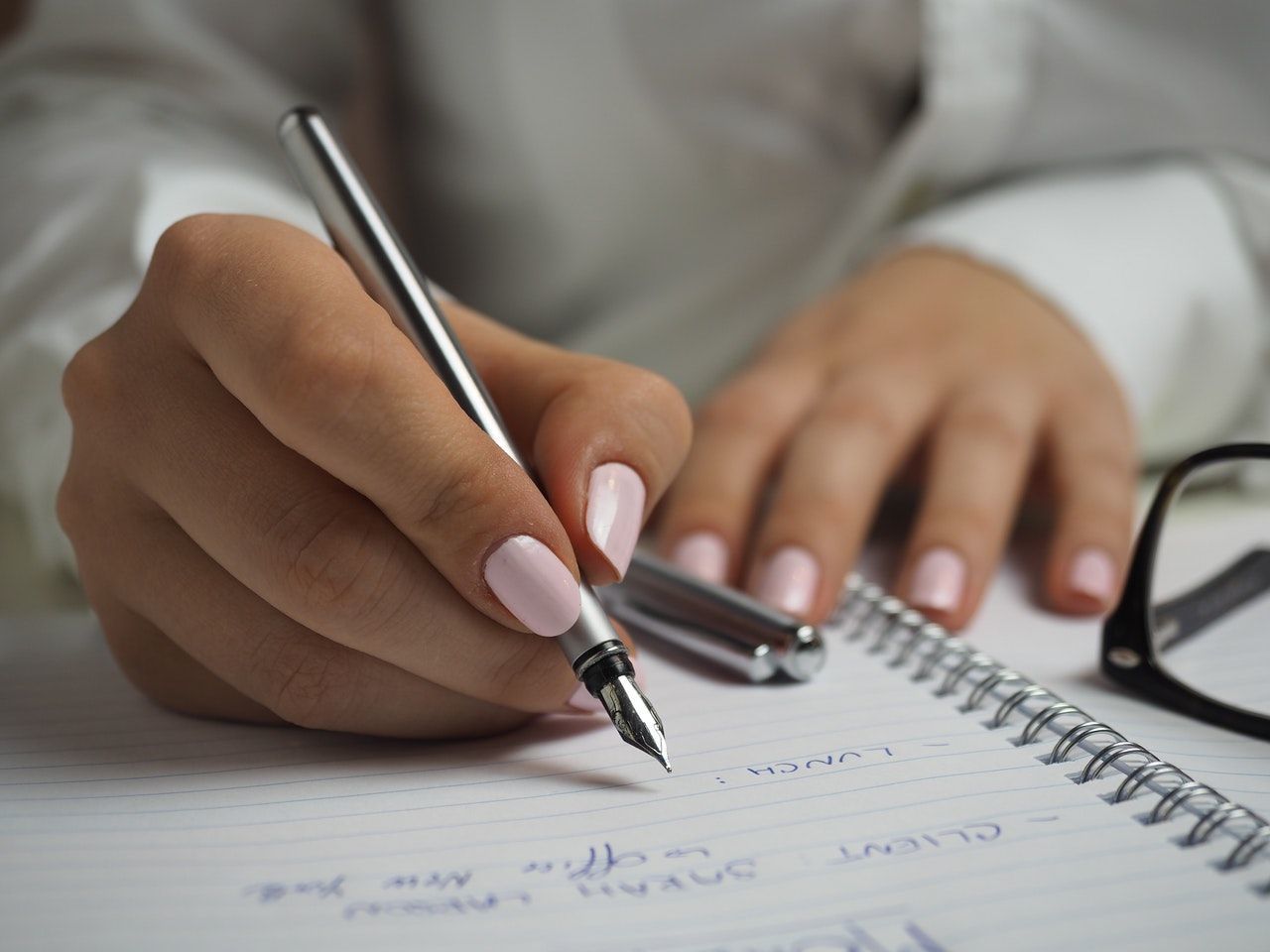
At the very tip of the fountain pen nib is a small, spherical structure made of a (usually harder) metal than the rest of the nib. Erroneously named the “iridium” due to the fact that iridium metal was once the industry standard metal used for creating the tip. The tip can also be referred to as the “point” or the “tipping material.”
For ink to flow, the iridium must touch the writing surface. The nib you choose heavily influences iridium placement. Nibs come in different shapes and sizes, depending on if you are using them for writing music, calligraphy, creating art, or everyday writing.
The angle of the iridium affects how much of the nib touches the paper and the outflow of ink, which controls line thickness. As you write, keep the nib slanted diagonally to the writing surface.
You will notice that the nib is designed with a curvature, one side being convex (arched outward) and the other being concave (caved inward). The concave side is held downward, while the flatter side faces upward so you can see it while you write. Keeping the nib diagonal is more effective than writing it positioned vertically. Additionally, the tines must align, with both tines touching the paper evenly, for the pen to run smoothly across the page.
Posting (or Not Posting) the Fountain Pen Cap
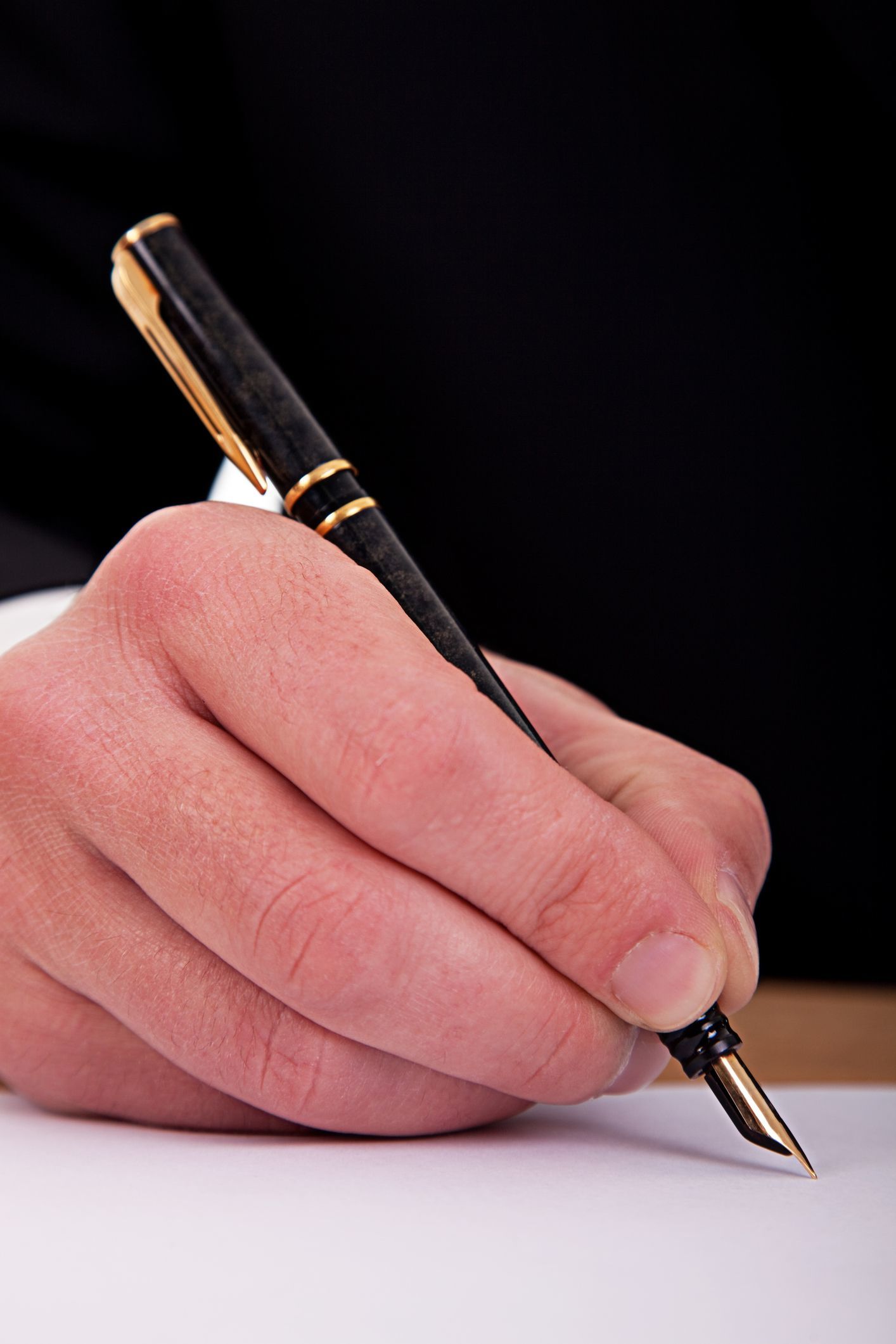
Posted fountain pen
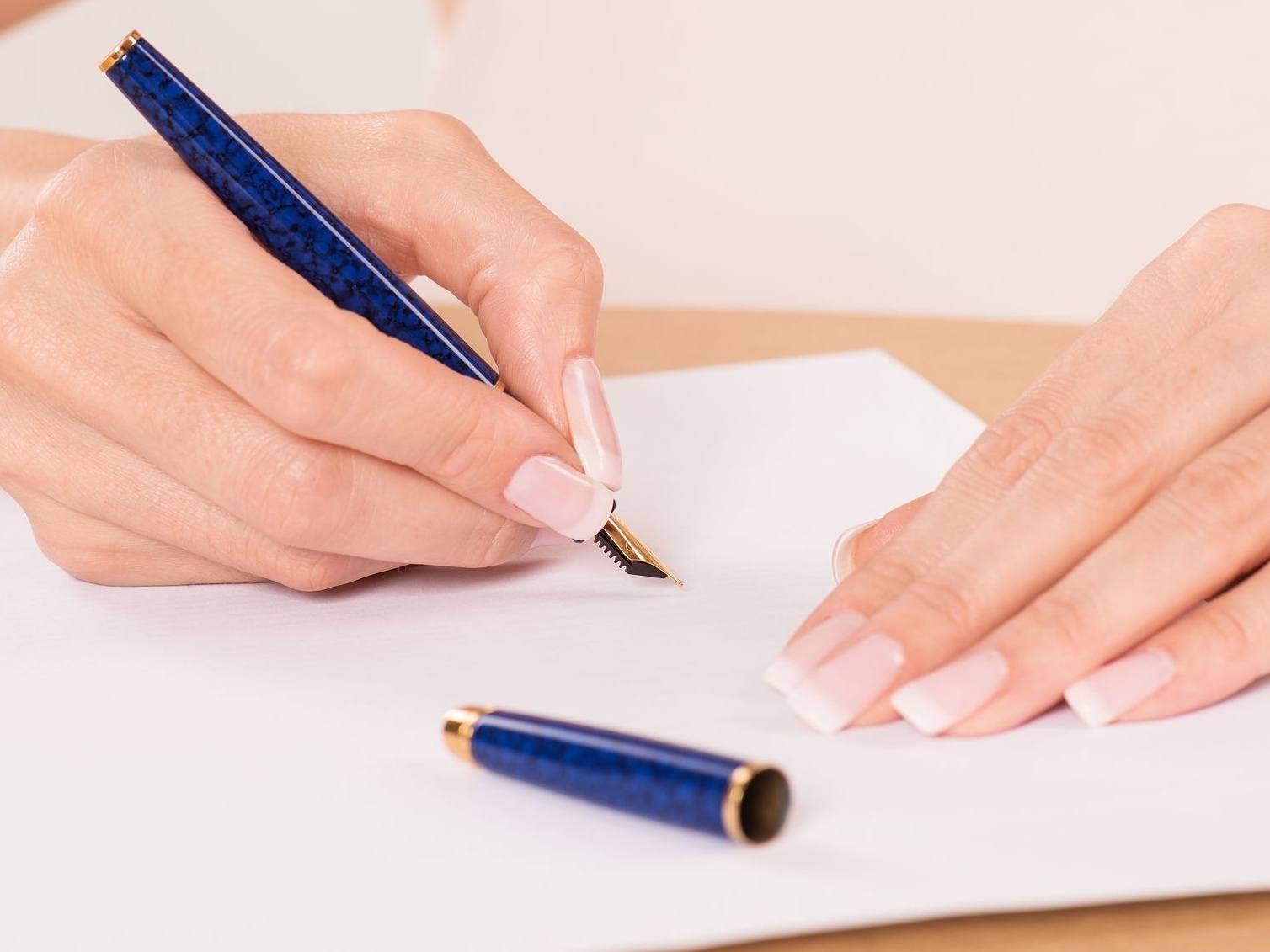
Unposted fountain pen
Fountain pen writers have a choice between capping (also known as ‘posting’) the fountain pen cap, which is placing the cap on the opposite end of the pen barrel while writing. Or the other option is leaving it off of the pen body (‘unposted’). When holding a fountain pen, posting the cap is important for creating balance and control. Europeans have a tendency to post their caps, while Americans prefer to leave theirs unposted.
Quick Writing Tip: For ideal balance, the clip (found on the fountain pen cap) should aligned with the nib while you write.
Writing Motion
When you use a pencil or ballpoint pen, it is common to engage your finger and hand muscles as you write. By contrast, fountain pens require you to control the pen without moving your hand. As you hold the fountain pen steady and at a consistent angle, you should use the motion of your forearm to move the pen across the page.
This will feel strange at first, but it has a few benefits. First, writing with the forearm prevents strain in the small fingers and wrist, which is not uncommon in extended/prolonged writing sessions with a ballpoint pen or pencil. Second, it makes it easier to hold the pen steady, with a constant angle and without rotation. Finally, this method of writing improves the reliability of the script and helps keep the size and shape of the letters you are creating more consistent.
Final Thoughts
One of the reasons that fountain pens are so beloved is because of the unique writing experience that a fountain pen offers. Whether you are writing with a fountain pen for calligraphy, creating music or art, or just want to write using an effortless, superior writing utensil, you must choose the proper fountain pen and nib for the job. The only way to know if a pen will fit your needs and writing style is with some fountain pen writing practice. The motions will become easier and your penmanship will improve with time.
Please comment and share below
Although this article is comprehensive, the information presented is only as accurate the material we were able to source, and is by no means exhaustive, authoritative, nor complete. If you have additions or corrections which you believe should be included in this page, we invite you to include your comments below. Please consider sharing both the citation as well as the new information with us. Our goal is to foster an open dialogue with our readers.
Please also share the article with fountain pen enthusiasts. We appreciate you spreading the word!

